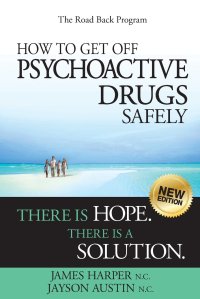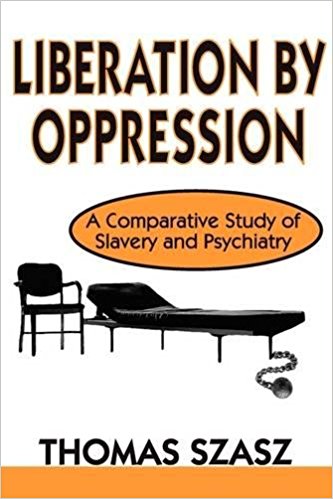
Sigmund Freud was a fraud. He was a charlatan of the highest order. Yet his pernicious ideas have not only survived, but thrived. In his book Anti-Freud: Karl Kraus’s Criticism of Psychoanalysis and Psychiatry, Thomas Szasz reveals the truth about Freud through a careful study of one of Freud’s earliest and most insightful critics, Karl Kraus. A modern critic of psychiatry recently attempted to defend Freud and psychoanalysis by claiming that Freud was “The First Anti-Psychiatrist.” Nothing could be further from the truth. In fact, the exact opposite is true. The honor that is due to the first anti-psychiatrist more rightly belongs to Freud’s contemporary, and one of his fiercest critics, Karl Kraus.
Szasz appreciates Kraus not only for his bold opposition to psychiatry and psychoanalysis, but also because Kraus was a proponent of individual liberty and responsibility. Unlike Freud, he was, in Szasz’s estimation, a man of integrity. He was a noble rhetorician, that is, a master artist and poet who worked in the medium of language to persuade his audience toward that which is good, and away from that which is evil.
With characteristic aplomb, Szasz explains why Freud has become so popular and why Kraus has mostly been forgotten. Szasz’s description of this phenomenon also applies to Szasz himself. Szasz’s reputation has often been tarnished by calumny or neglect:
“Although Karl Kraus was one of the first, most perceptive, and, in his day, most famous critics of psychoanalysis and psychiatry, the name of this twentieth-century Viennese literary-intellectual giant had, until recent years, been virtually unknown in the English-speaking world. My book on Kraus, first published in 1976, was intended to remedy this situation and accord this remarkable person his rightful place in the history of Misbehavioral Science, a place whose memory psychoanalysts have been eager to erase. Indeed, Kraus’s critique of the then freshly burgeoning mental health professions was so undeniably right that psychiatric and psychoanalytic loyalists have chosen, during the better part of this century, either to ignore his views altogether or to dismiss them with a few cursory remarks.” (p. xi)
Szasz’s thorough study of Kraus, as well as his careful translations of his work, is indispensable for understanding Freud’s fraudulence, and the corresponding myths of mental illness and psychotherapy. Like Kraus, Szasz exposes the truth about psychiatry with precision, accuracy, and good humor. The evidence that he compiles to debunk the myths inherent in coercive psychiatry is copious and clear, and Freud is unquestionably one of the major figures at the rotten core of psychiatry:
“Ironically, Freud – the celebrated freethinker and mental liberator – was one of the most successful modern practitioners of this technique [thought control].” Nevertheless, Freud scholars (in reality, Freudian apologists) continue to try, and fail, to reconcile Freud’s publicly proclaimed psychoanalytic principles with his behavior and private utterances – the latter being so inconsistent with the former as to make Freud one of the world’s truly great hypocrites.” (p. xii)
Szasz’s scathing criticism of Freud extends to Freud’s invention, namely psychoanalysis. Contrary to popularly accepted opinion, Freud did not discover a new scientific treatment. He created “fake therapy,” “fake case histories,” “fables of patients without diseases,” “fake etiologies,” and in short, a pseudoscience:
“With the pseudomedical edifice of psychoanalysis thus completed, the quack cure was elevated – by a combination of promotional conceit and popular gullibility – to the status of a full-fledged medical scientific treatment.” (p. xiii)
Contemporaries and subsequent generations have promoted Freud’s views in countless different ways. As Szasz shows, some have even gone so far as to invent fake historiographies and hagiographies of Freud in order to promote psychoanalysis. (p. xiii) Kraus, on the other hand has largely been forgotten or ignored. Nevertheless, Kraus was not alone in his “animosity against the Freudian cult” (p. xv). Szasz records George Steiner observation that:
“Canetti belongs to the small constellation of first class minds and sensibilities who have in our time rejected Freud and the psychoanalytic construct as a factitious, antihistorical mythology. . . . This constellation comprises Kraus, Wittgenstein, and Heidegger, as well as Canetti himself.” (p. xv)
Szasz identifies Kraus as a noble rhetorician, which for Szasz is greater than a satirist, poet, or polemicist. (p. xix) He also explains why Kraus’s work has been unjustly neglected:
“I believe, and I shall try to support my belief with evidence, that he is so little known today because he was on the ‘wrong’ side in the great ideological battle of his time; I further believe that he remains untranslated not so much because his German is so difficult – thought it surely is – as because his writings run against the grain of our contemporary intellectual mores even more than they did against his.” (p. xx)
From Szasz’s perspective – and I believe that he is correct – Kraus’s work plays an essential role in the history of psychiatry and psychoanalysis:
“Let me say here only that a history of the formative years of psychoanalysis without Kraus – which is how all such histories have so far been written – is like the cultural history of Europe during the French Revolution without Edmund Burke, or the political history of America without the Antifederalist Papers, or the medical history of infectious diseases without Ignaz Semmelweis, or the contemporary history of Russia without Aleksandr Solzhenitsyn… Kraus was prescient: while others hailed the modern arts of mental healing as liberating scientific advances, he already saw them, and warned against them, as threats to human dignity.” (p. xx-xxi)
Szasz’s book Anti-Freud: Karl Kraus’s Criticism of Psychoanalysis and Psychiatry begins with a chapter on Kraus’s life and work. It continues with a presentation of Kraus’s critique of psychiatry and psychoanalysis, chapters on the connections between Kraus and Freud, a chapter on Kraus’s place in cultural history, and on his position in more recent times. It concludes with a selection of Szasz’s own translations of Kraus’s original work.
Szasz’s hope was to present Karl Kraus “as a pioneer critic of psychiatry and psychoanalysis,” to people who “still care about human dignity.” Like Kraus, Szasz was a friend to human dignity. Like most psychiatrists and psychoanalysts who followed him, Freud was an enemy to human dignity.:
“Not everyone so disposed can or wants to take the trouble to defend his fortress against those who lay siege to it. But everyone can, if he wants to, at least distinguish between the friends of human dignity and its enemies.” (p. xxiii)
In 1899, at the age of twenty-five, and in his native Austria, Kraus founded a new magazine called Die Fackel (The Torch). One of Kraus’s main targets for his satire was the press, and the press retaliated by ignoring his work (which Kraus called Totschweigetaktik, the “silent treatment”). This same tactic has been used against Thomas Szasz himself. Although he is a prolific author who has published thirty-five books and even more scholarly papers, in most circles, Szasz has been given the silent treatment.
To remedy this problem, and in the continuing battle against coercive psychiatry, I offer a selection of quotations from Szasz’s excellent book Anti-Freud: Karl Kraus’s Criticism of Psychoanalysis and Psychiatry. My hope is that the works of both Szasz and Kraus will no longer remain obscured because of Totschweigetaktik, or the “silent treatment.”
- “Kraus thus anticipated the insights – into the relationship between the control of language and of liberty, between the destruction of the human word and of the human soul, between semantics and politics – of the celebrated authors of our age who have sounded the alarm against the utopias of hell being readied for us – in particular, those of Yevgeny Zamiatin, Aldous Huxley, and George Orwell. But more immediately relevant to our present concerns is Kraus’s sensitivity to, and warning against, not the political but the psychiatric and psychoanalytic demagogues and destroyers of our words and our world.” (p. 17-18)
- “Kraus tried to push people toward dignity and independence through love of and respect for language; Freud tried to pull them toward discipleship and conformity through love of and respect for his own legends. In this clash between these two giants we see foreshadowed much of the confused and tumultuous history of the past half-century of psychiatry and psychoanalysis.” (p. 19-20)
- “The distinguishing characteristic of all of Kraus’s life and work was his passion for integrity. Personal integrity – to be as good as one’s word – was for Kraus the highest virtue.” (p. 22)
- “Evidently, only Kraus saw what others were unwilling to see – that Freud was not a real physician, and that his psychoanalytic method was not a real treatment. ‘Psychoanalysis,’ Kraus insisted, ‘is the disease of which it claims to be the cure.’ … ‘Nerve doctors who pathologize genius should have their skulls bashed in with the collected works of the genius.'” (p. 24)
- “Kraus continued to attack both psychiatry and psychoanalysis, mainly by poking fun at them. Increasingly, Kraus saw psychoanalysis as an ideology destructive of individualism and personal responsibility, and the vigor of his condemnation increased apace. In 1932, remarking on the ‘spiritual foundations’ of modern fanatical movements, he couples, in the same sentence, ‘the swastika’ (i.e. Nazism) and ‘the despicable business of psychoanalysis.'” (p. 30)
- “The ‘medical language’ to which Rank here refers is, of course, not only sterile but also destructive and dehumanizing. This is why I call psychoanalysis base rhetoric, and its inventor and principal franchiser, Freud, a base rhetorician.” (p. 38)
- “The doctrines of psychoanalysis (and psychiatry) are nothing but ‘metaphorical conquests’ over earlier doctrines concerning human nature and social control, mainly of Judaism and Christianity.” (p. 47)
- “Freud’s basic aims were to annex morals to medicine, to create a cryptoreligious ideology and be its leader. Kraus’s basic aims were to demonstrate the moral and political consequences of debauching language in the service of special interests – whether political or psychiatric, legal or journalistic – and to purify language and thus help individuals to protect themselves from the obfuscators and obfuscations of language.” (p. 52)
- “Kraus reemphasizes and raises to new heights the Socratic principle that true knowledge lies in fearless questioning and clear speaking, and that such conduct is, par excellence, a moral enterprise… Whereas Freud stands at the very opposite pole: his is not genuine questioning, in the sense of trying to open his interlocutor’s eyes and mind, but is only a preliminary step leading to his answering all questions, filling his own as well as his interlocutor’s mind with his interpretations, and silencing the inquiry. For Kraus and Wittgenstein, the right question suffices to destroy falsehood; for Freud, falsehood generated by a repression must be replaced with truth gained through ‘psychoanalytic insight.'” (p. 63)
- “What I mean when I say that Freud was a demoralizer is that he insisted that we view a wide variety of human behaviors, and finally all human actions, not as the consequences of moral decisions, but as the symptoms of medical diseases – that, in other words, man was not a free moral agent, but a foolish medical patient.” (p. 64)
- “I cannot get myself to accept that a whole sentence can ever come from half a man.” – Karl Kraus
- “Herein lies Kraus’s genius, which, in its way, surpasses Freud’s and Wittgenstein’s. He takes the person’s product – in this particular case, language – and pronounces judgment on it, supported by the evidence which that very work displays. This approach is diametrically opposed to that of the Freudian ‘pathography’ or of the modern ‘psychohistory,’ in which the critic uses information unrelated to the work of art, or even manufactured by him, in order to defame and discredit its creator.” (p. 65)
- “Friedell saw with frightening clarity that psychoanalysis had nothing to do with medicine or healing, but had everything to do with religion and morals – and with base rhetoric: ‘Psycho-analysis is in truth a sect, with all the signs and symbols of one – rites and ceremonies, oracles and mantic, settled symbolism and dogmatism, secret doctrine and popular edition, proselytes and renegades, priests who are subjected to tests, and daughter sects which damn each other in turn. Just as the whale, though a mammal, poses as a fish, so psycho-analysis, actually a religion, poses as a science. This religion is pagan in character: it embraces nature-worship, demonology, chthonian belief in the depths, Dionysian sex-idolization. This connection of religion with therapy, hygiene, and the interpretation of dreams existed in the ancient world also, as for example the healing sleep for the sick in the temples of Asklepios. And we have here a seer and singer working for the powers of darkness in most enticing tones, an Orpheus from the Underworld: it is a new world-wide revolt against the Gospel.'” (p. 71-72)
- “It is in Eric Voeglin, then, that we next encounter a modern thinker who carries on the moral dialogue against psychoanalysis initiated by Kraus. Voegelin classifies psychoanalysis – with Marxism, Communism, and National Socialism – as a form of gnosticism, a term he uses in juxtaposition to philosophy. Philosophy is the love of knowledge or truth; its aim is personal salvation. Gnosticism is the claim to having knowledge or truth; its aim is not personal salvation, but domination over others. While true philosophy values nothing higher than questioning, gnosticism, having arrived at truth, prohibits questioning. Voegelin illustrates this by quoting Marx as having written ‘Give up your abstraction and you will give up your question along with it. . . . Do not think, do not question me.” (p. 77)
- “Philosophy [writes Voegelin] springs form the love of being; it is man’s loving endeavor to perceive the order of being and attune himself to it. Gnosis desires dominion over being; in order to seize control of being the gnostic constructs his system. . . . By gnostic movements, we mean such movements as progressivism, positivism, Marxism, psychoanalysis, communism, fascism, and national socialism. We are not dealing, therefore, in all of these cases with political mass movements. Some of them would more accurately be characterized as intellectual movements – for example, positivism, neo-positivism, and the variants of psychoanalysis. . . . [However, these movements[ have had, if not the form, at least the success of political mass movements, in that their theories and jargons have shaped the thinking of millions of people in the Western world, very often without their being aware of it.” (p. 77)
- “Kraus fully recognized Freud’s ‘genius’ – just as he recognized Hitler’s – but he regarded it as a genius for evil rather than for good.” (p. 96)
- “Ours, after all, is the age of the Mass Man and of Liberalism: its hero is the lover of Mankind, who supports the freedom and dignity of all nations, religions, and professions and opposes only the freedom and dignity of individuals; and who, by conducting himself accordingly, is hated by everyone who actually knows him and is loved by Mankind. Karl Kraus lived almost as if he had consciously tried to fashion his life into the exactly opposite mold: and he very nearly succeeded in making everyone who really knew him love him, and in making all Groups, and all their loyal defenders, hate him. Herein, perhaps, lies his ultimate and most enduring significance.” (p. 100)
- “Before Freud, doctors cautioned that the cure may be worse than the disease; now they ought to caution that there is a cure which is a disease – namely, psychoanalysis.” – Karl Kraus (p. 103)
- “Psychoanalysis is the occupation of lewd and lascivious rationalists who attribute everything in the world, except what they themselves do, to repressed sexuality.” – Karl Kraus (p. 103)
- “God made man out of dust. The analyst reduces him to it.”- Karl Kraus (p. 105)
- “Psychoanalysis is a passion, not a science. IT lacks the steady hand of the investigator. Indeed, it is precisely this lack which characterizes the psychoanalyst: He loves and hates his subject, envies his freedom and power, and busies himself with reducing his patient’s strengths to the level of his own weaknesses. He claims that the artist sublimates a defect because he feels defective. Psychoanalysis is, in fact, an act of revenge through which the analyst’s inferiority is transformed into superiority. The patient tends naturally to subordinate himself to the physician. This is why today every idiot wants to treat every genius. But no matter how hard the physician tries to explain genius, all he can come up with is his own lack of it. Genius requires no explanation. Moreover, efforts to explain genius are usually only the defenses of mediocrity against it. Hence, there is only one justification for the existence of psychoanalysis: it is useful for unmasking psychoanalysis.” – Karl Kraus (p. 106)
- “My unconscious knows more about the consciousness of the psychologist than his consciousness knows about my unconscious.”- Karl Kraus (p. 106)
- “Psychologists: unmaskers of the insignificant, swindlers of the significant.” – Karl Kraus (p. 108)
- “There is now a medical tendency to apply the technical terms of surgery to the soul. Like all analogies between disparate matters, this is a joke. Perhaps it’s the best joke materialism is capable of producing. If the doctor now wants to do a D & C (dilations and curettage) on the unconscious of a female patient, or if the doctor wants to drain the pussy passions of an affective abscess, then his efforts are based on an extremely humorous idea. Moreover, this idea is bound to be irresistible because the interventions of the soul-doctor are performed without even the narcosis of suggestion. This whimsical method of treatment [psychoanalysis] should not, however, diminish our appreciation of the real value of the discovery of the origin of mental illnesses: it makes its discoverer [Freud] famous.” – Karl Kraus (p. 109-110)
- “Psychopathologists now concern themselves with poets who arrive for their check-up after they are dead. It serves the poets right. They should have raised mankind to a level where there could have been no psychopathologists.” – Karl Kraus (p. 111)
- “Despite its deceptive terminology, psychoanalysis is not a science but a religion – the faith of a generation incapable of any other.” – Karl Kraus (p. 117)
- “Moreover, it is an integral part of mental diseases and treatments that the illness may be the treatment, and the treatment the illness; that the healthy often emerge from the analyst’s office sick, and that the patients often emerge as therapists. This is the land where confusion between the real and the false reigns supreme.” – Karl Kraus (p. 123)
- “Psychoanalysis, we are warned, has become a menace. Nonsense. It was a menace from the day it was born.” – Karl Kraus (p. 123)
- “The psychiatrist unfailingly recognizes the madman by his excited behavior on being incarcerated.” – Karl Kraus (p. 127)
- “The difference between mad-doctors and other madmen is roughly the same as that between convex and concave folly.” – Karl Kraus (p. 127)
- “Enough of this humbug that has fooled mankind for so long!” – Karl Kraus (p. 131)
- “I detest psychiatry because it feeds the individual’s hunger for power, and because, like journalism, it carries within itself vast potentialities for its abuse. I see the psychiatrist, whose capacity for well-considered action and hence his talent for corruptibility I consider slight, as essentially feeble-minded.” – Karl Kraus (p. 136)
- “Diagnosis: one of the commonest diseases.” – Karl Kraus (p. 153)
- “Medicine: ‘Your money and your life!'” – Karl Kraus (p. 153)
- “He died: the serpent of Aesculapius bit him.” – Karl Kraus (p. 153)
- “Away with the doctors and lawyers! This world belongs to the poets.” – Karl Kraus (p. 154)
- “Doctors have no imagination in describing diseases. Perhaps that’s why their accounts of real illnesses fit imaginary illnesses so well.” – Karl Kraus (p. 156)
- “I possess the happy combination of a great talent for psychology with an even greater talent for seeing through it.” – Karl Kraus (p. 156)
- “Because I write about everyday events, my readers believe that I write for today. I must wait until my remarks are out of date. Then, perhaps, they will be timely.” – Karl Kraus (p. 156)
- “An aphorism can never be the whole truth; it is either a half-truth or a truth-and-a-half.” – Karl Kraus (p. 157)
- “A civilized person does not compare an urn with a chamber pot, much less use it as one. This, Kraus said, was the gist of his message. In our day, when more people than ever are devoted to the degradation and destruction of urns, and to the euphemization and exaltation of chamber pots, Kraus’s message is more painful and timely than ever.” (p. 162)










